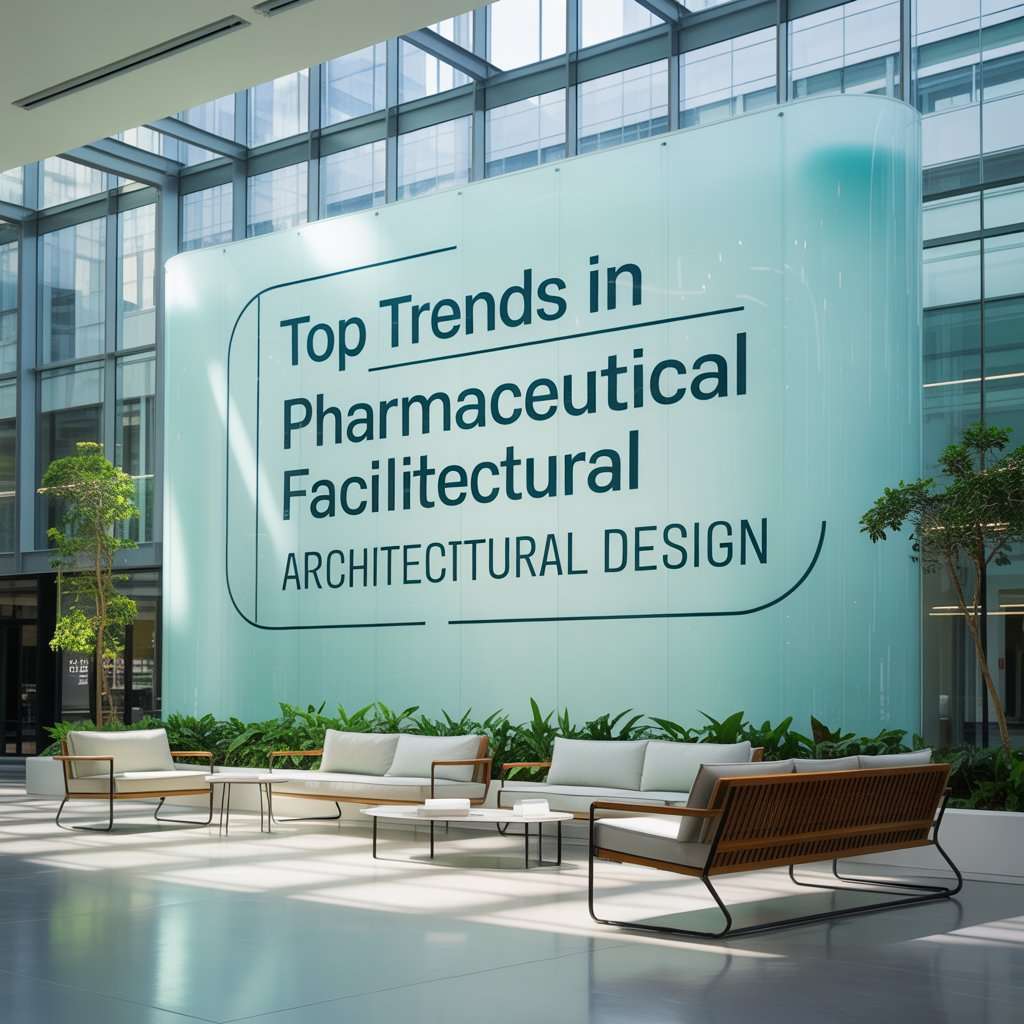Are you struggling to keep up with the latest standards in pharmaceutical facility design? Whether you’re planning a new production unit or upgrading an existing one, staying ahead of architectural trends is crucial for efficiency, compliance, and innovation. In this post, we’ll explore the top trends in architecture for pharmaceutical production units, offering practical insights to help you design a state-of-the-art facility.
You’ll learn about cutting-edge designs, regulatory compliance, and sustainable solutions that can save time and costs while meeting industry standards. Let’s dive into the future of pharmaceutical facility design!
1. Flexible and Modular Design for Scalability
Why Modular Design Matters
The pharmaceutical industry is fast-paced, with evolving production needs. Modular designs allow facilities to adapt quickly to new products or processes without costly overhauls.
Actionable Tips
- Incorporate flexible layouts: Use movable partitions or modular cleanrooms to reconfigure spaces easily.
- Plan for scalability: Design with extra space for future equipment or production lines.
- Work with experts: Partner with a pharmaceutical engineering services team to ensure designs meet GMP (Good Manufacturing Practice) standards.
2. Sustainability in Pharmaceutical Facility Design
The Push for Green Facilities
Sustainability is no longer optional—it’s a priority. Energy-efficient designs reduce costs and align with global environmental regulations.
Actionable Tips
- Use energy-efficient systems: Install LED lighting and HVAC systems optimized for cleanrooms.
- Incorporate renewable energy: Solar panels or geothermal systems can power non-critical areas.
- Choose sustainable materials: Opt for eco-friendly construction materials that meet regulatory requirements.
3. Advanced Automation and Smart Technology
Embracing Industry 4.0
Automation is transforming pharmaceutical production units. Smart technology improves efficiency, reduces errors, and ensures compliance.
Actionable Tips
- Integrate IoT devices: Use sensors to monitor temperature, humidity, and air quality in real-time.
- Automate workflows: Implement robotic systems for repetitive tasks like packaging or material handling.
- Hire experts: Engage an engineering project management consultancy to oversee automation integration.
4. Regulatory Compliance and Product Safety
Staying Ahead of Regulations
Compliance with FDA, EMA, or local regulations is non-negotiable. Designs must prioritize product safety and traceability.
Actionable Tips
- Design for compliance: Include dedicated areas for quality control and documentation.
- Consult experts: Work with a product compliance consulting firm to navigate complex regulations.
- Conduct regular audits: Schedule facility audits to ensure ongoing compliance.
5. Enhanced Cleanroom Technology
The Heart of Pharma Production
Cleanrooms are critical for contamination-free production. New technologies are making them more efficient and adaptable.
Actionable Tips
- Use advanced filtration systems: Install HEPA filters with real-time monitoring.
- Optimize airflow: Design laminar flow systems to minimize particle contamination.
- Partner with specialists: Collaborate with pharmaceutical engineering services for cutting-edge cleanroom designs.
FAQ Section
1. What is the role of pharmaceutical engineering services in facility design?
A.. Pharmaceutical engineering services provide expertise in designing compliant, efficient, and scalable facilities, ensuring alignment with industry standards.
2. How can a pharma engineering consultancy in India help?
A consultancy offers local expertise, cost-effective solutions, and knowledge of regional regulations, making projects smoother and faster.
3. Why is regulatory compliance critical in pharmaceutical facility design?
Compliance ensures product safety, avoids legal penalties, and maintains market trust, especially for global distribution.
4. How do modular designs benefit pharmaceutical production units?
Modular designs allow flexibility, reduce downtime, and make it easier to scale or reconfigure facilities for new products.
Conclusion
The future of pharmaceutical facility design is exciting, with trends like modular layouts, sustainability, automation, compliance, and advanced cleanrooms leading the way. By adopting these innovations, you can build efficient, compliant, and future-ready production units. Partnering with a pharma engineering consultancy in India or a top regulatory compliance consulting firm can make the process seamless. Have questions or want to share your thoughts? Drop a comment below or contact us to explore how we can help with your next project!
Ready to design a cutting-edge pharmaceutical facility? Contact our Pharma Consulting team today for expert guidance!

